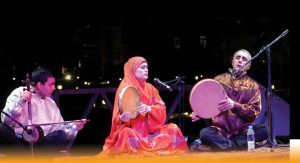new genre varieties
“NOT DAM DE PARI” – THE CONQUERED WORLD MUSIC ABOUT LOVE
 The musical Notre-Dame de Paris is, above all, a spectacle. And this is fifty songs about love, amazing voices, melodic music that combines French chanson and gypsy motifs. Notre Dame captures from the first second. From the first second until the curtain. Now it’s hard to find a person who wouldn’t hear about the musical or listen to the musical itself, if not all, then at least passages, possibly without even realizing that it was Notre Dame de Paris. It is safe to say that this musical is the most recognized and best known in the whole world. And the leading performers won worldwide acclaim.
The musical Notre-Dame de Paris is, above all, a spectacle. And this is fifty songs about love, amazing voices, melodic music that combines French chanson and gypsy motifs. Notre Dame captures from the first second. From the first second until the curtain. Now it’s hard to find a person who wouldn’t hear about the musical or listen to the musical itself, if not all, then at least passages, possibly without even realizing that it was Notre Dame de Paris. It is safe to say that this musical is the most recognized and best known in the whole world. And the leading performers won worldwide acclaim.
The fame of the musical spread well before the premiere on September 16, 1998 in Paris. The official premiere was preceded by a CD with the songs of the musical, which made a splash, having won the heights of various charts in many countries. The most famous song of the musical “Belle” became an independent world hit and received several music awards. Of course, after such success of the released album, the premiere was waited impatiently, and not in vain. The musical was a huge success and even got into the Guinness Book of Records, as the most visited in its first year on stage. Continue reading
Mugham
MUG AM is the main form (genre) of Azerbaijani professional music of oral tradition.
AM is the main form (genre) of Azerbaijani professional music of oral tradition.
Part of the pan-eastern culture of macamata. The poetic basis of Mugam is the gazelles of classical and modern poets. Monodial mugham art has developed over many centuries, transmitted from generation to generation.
The teaching method is based on auditory perception, memorization and creative comprehension of mugham information transmitted from the master (ustad) to the student (shagird). Cyclic mugam compositions are embodied in small and large instrumental (solo) and vocal-instrumental (ensemble) forms. The mugham composition is based on frets (modes), each of which has a characteristic final melodic formula (ayag).
An important feature of Azerbaijani Mugam is the improvisation of a metrically free ornamental melody within the framework of a certain canon. Performers also have some freedom in composing a mugam composition (selection of parts, their sequence and quantity). Depending on local characteristics, time (season, time of day) of performance, talent of the performer is the same. mugams can have different options. Mugam schools are preserved: Baku, Karabakh, Shirvan, etc. Continue reading




